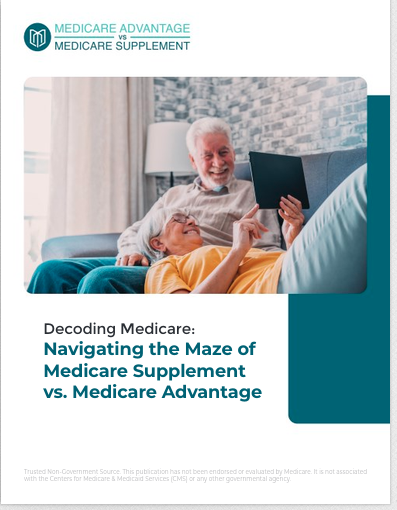Key Takeaways
-
Medicare Advantage plans often promote added benefits and low out-of-pocket costs, but many of these features come with significant trade-offs in network access and prior authorization requirements.
-
Understanding the structure behind Medicare Advantage in 2025 is essential before enrolling, especially due to restrictions not always disclosed clearly in marketing materials.
Why Medicare Advantage Plans Are So Widely Advertised
You’ve likely seen commercials, mailers, and phone calls promoting Medicare Advantage plans. These ads often highlight extra benefits that Original Medicare doesn’t cover, such as vision, hearing, dental, or gym memberships. While this can sound appealing, what’s less visible in the advertising is how these plans are funded, how they function, and what you might give up in exchange.
Medicare Advantage, also known as Part C, is an alternative to Original Medicare. It’s run by private companies that receive a fixed payment from Medicare for each person enrolled. This setup incentivizes cost-saving strategies, which may benefit the plan provider more than you.
How Medicare Advantage Works in 2025
In 2025, Medicare Advantage plans continue to operate under capitated payments from Medicare. That means these private plans get a set amount per member per month, regardless of how much care you actually use.
Plans use this fixed budget to manage your care. If they spend less than they receive, they profit. If they spend more, they lose money. While this model encourages efficiency, it also promotes managed care practices that can restrict your access to services.
Core Features of Medicare Advantage:
-
Coverage includes Medicare Parts A and B
-
Often includes built-in Part D drug coverage
-
Most plans offer additional benefits (e.g., dental, vision)
-
Enrollees typically must use network providers
-
Many services require prior authorization
The Network Trap: Why Choice Can Be Limited
Unlike Original Medicare, which allows you to see any provider that accepts Medicare, most Medicare Advantage plans rely on provider networks. These can be Health Maintenance Organizations (HMOs) or Preferred Provider Organizations (PPOs), each with its own rules.
In 2025, many Medicare Advantage HMOs require referrals to see specialists and do not cover out-of-network services except in emergencies. PPOs may cover out-of-network providers, but often at a significantly higher cost.
This network restriction can have serious consequences:
-
You may need to switch doctors if they’re not in-network.
-
Access to top-rated specialists or hospitals could be limited.
-
Moving to a new state or even a different county could disrupt your plan entirely.
Prior Authorization: The Hidden Barrier to Care
One of the most criticized elements of Medicare Advantage is prior authorization. This is when the plan requires approval before you can receive certain medical services, tests, or prescriptions. It’s designed to control costs, but it often delays necessary care.
In 2025, over 95% of Medicare Advantage enrollees are in plans that use prior authorization. This includes imaging procedures, surgeries, durable medical equipment, and more.
While Original Medicare doesn’t impose this level of gatekeeping, Medicare Advantage plans regularly require:
-
Clinical justification paperwork
-
Waiting periods for approval
-
Resubmission of requests after denials
This creates friction for both patients and healthcare providers, potentially leading to delayed or foregone care.
Extra Benefits Aren’t Always What They Seem
Yes, it’s true that Medicare Advantage plans in 2025 frequently advertise extra perks, such as transportation to appointments, meal delivery after hospital stays, or even over-the-counter allowances. However, these benefits come with caveats.
Key limitations to be aware of:
-
Benefits are often tied to specific vendors or service areas.
-
Usage caps may apply (e.g., limited rides per year).
-
Not all benefits are available in all plans or regions.
It’s important to read the plan’s Evidence of Coverage (EOC) document carefully to understand what’s included—and what’s not.
Out-of-Pocket Costs: The Ceiling Isn’t Always Clear
While Medicare Advantage plans are required to have a maximum out-of-pocket (MOOP) limit, the number can still be quite high. In 2025, the MOOP for in-network services is capped at $9,350, and the combined in- and out-of-network cap is $14,000.
What this means for you:
-
You could be responsible for thousands of dollars in copays and coinsurance before the plan begins to cover 100%.
-
Higher MOOP limits in PPOs make out-of-network care more financially risky.
-
Hospital stays, specialty drugs, and complex procedures can quickly add up.
Original Medicare, in contrast, does not have an out-of-pocket limit—but many beneficiaries pair it with Medigap for more predictable costs.
Switching Isn’t Always Simple
If you try Medicare Advantage and decide it isn’t right for you, switching back to Original Medicare can be difficult. That’s because Medigap plans—designed to fill the cost-sharing gaps in Original Medicare—often require medical underwriting outside your initial enrollment period.
Here’s what that means:
-
If you switch back to Original Medicare after the first 12 months, you may be denied Medigap due to pre-existing conditions.
-
Some states offer guaranteed issue rights year-round, but most do not.
-
Timing your switch during the Annual Enrollment Period (Oct 15–Dec 7) is critical.
Marketing Messages Often Gloss Over These Realities
Medicare Advantage advertising is often designed to emphasize the plan’s potential savings and added features. What’s less frequently mentioned is how trade-offs work behind the scenes.
You might hear about:
-
“Extra benefits included”
-
“No referrals required” (only in some plans)
-
“Prescription drugs covered”
But you rarely hear about:
-
Network size limitations
-
Authorization delays
-
High maximum out-of-pocket costs
In 2025, stricter CMS rules have been implemented to make Medicare Advantage advertising more transparent, but not all messages fully reflect the complexity of these plans. That’s why careful plan comparison is so essential.
Why Some People Stay With Original Medicare
Despite the aggressive marketing, millions of people stick with Original Medicare. Why? Because it offers broader provider access and more predictable cost-sharing when paired with a Medigap plan.
With Original Medicare:
-
You can visit any doctor or hospital that accepts Medicare.
-
There’s no need for prior authorizations.
-
Coverage is nationwide—ideal for snowbirds or frequent travelers.
However, you’ll need to enroll in a separate Part D plan for drug coverage and pay additional premiums for Medigap.
What to Look for Before You Enroll
If you’re considering a Medicare Advantage plan in 2025, here’s what to review:
-
Provider Directory: Are your preferred doctors and hospitals in-network?
-
Drug Formulary: Are your medications covered, and at what cost tier?
-
Summary of Benefits: How high are the deductibles, copays, and MOOP?
-
Prior Authorization List: Which services require approvals?
-
Out-of-Area Coverage: How does the plan handle emergencies and travel?
It’s not enough to rely on brochures or commercials. Read the plan documents and consult a licensed agent for clarification.
The Bottom Line on What You’re Really Getting
Medicare Advantage can work well for some individuals, especially those in good health who prefer an all-in-one plan with extra benefits. But if you have chronic conditions, travel often, or value provider freedom, the restrictions may outweigh the benefits.
You deserve coverage that works for your needs today and protects you from surprises tomorrow. That’s why understanding the full scope of Medicare Advantage is vital before making your decision.
Talk to a licensed agent listed on this website to help you weigh your options. They can walk you through your choices, explain the fine print, and help you compare your Medicare Advantage plan to Original Medicare with Medigap.










